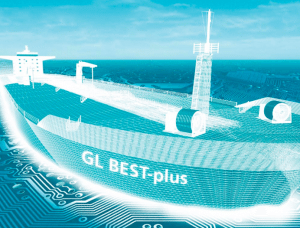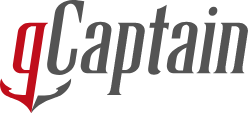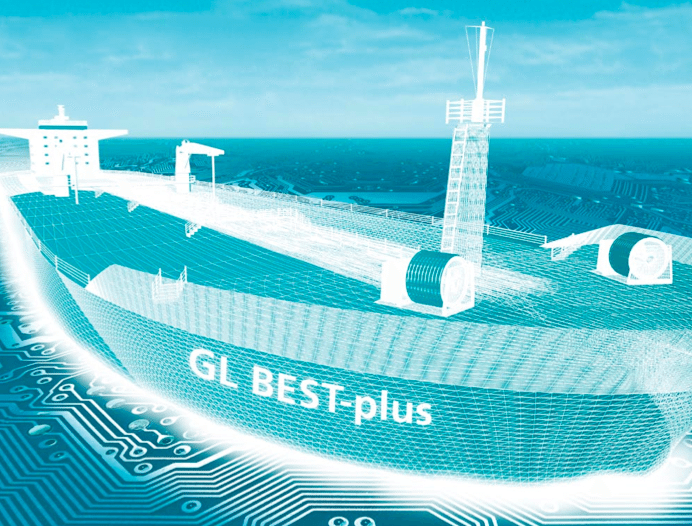 Oslo, Norway – The on-going trend to greener shipping impacts all ship designs. In recognition of the recently developed Energy Efficiency Design Index (EEDI), new design concepts have to focus primarily on fuel efficiency without compromising cargo capacity and safety.
Oslo, Norway – The on-going trend to greener shipping impacts all ship designs. In recognition of the recently developed Energy Efficiency Design Index (EEDI), new design concepts have to focus primarily on fuel efficiency without compromising cargo capacity and safety.
New more efficient tanker design
Germanischer Lloyd has developed a design concept for a crude oil tanker with improved energy efficiency, reduced CO2 emissions, increased cargo capacity, and minimized oil outflow in case of an accident. The design concept, the Aframax BEST-Plus design, maximises profitability by optimising the hull’s hydrodynamic performance, taking into account long-term freight rate levels and projected bunker costs.
The proposed vessel meets future EEDI requirements due to its speed and cargo capacity. The attained EEDI value is 83% of the latest published reference-line value for this ship size. The vessel would be in compliance with EEDI regulations if they were made mandatory today. The regulations are expected to come into force at the beginning of 2015 at the earliest. While newbuildings contracted before the EEDI has entered into force do not have to comply they will nevertheless have to compete with more energy efficient vessels entering the market after the introduction of EEDI.
Potential for Tanker Improvement
GL has focussed on a design concept for a crude oil tanker, because of the potential efficiency gains. Since the introduction of the double hull concept, oil tanker design has not evolved, and changes have been driven primarily by improving production at the ship yards. Little attention has been paid to performance over the life cycle and, in particular, the fuel-efficiency – as measured by the EEDI – has not improved in the last 20 years, despite the general improvement in systems.
Although oil tankers are considered to be among the most energy efficient vessels today, with an EEDI value ranging from 2 to 6 g CO2 / (t*nm), they emitted approximately 115 million tonnes of CO2 in 2009, an 8% increase from 2007. The current share of oil tanker CO2 emissions is approximately 12% of the total CO2 emissions from international shipping.
For the Aframax tanker design concept GL used an advanced optimisation environment, integrating software tools to predict required propulsion power, stability, oil outflow index, cargo capacity and hull structural scantlings according to IACS Common Structural Rules. The optimisation targeted speed at three different drafts, cargo capacity taking account of cargo volume and mass, hull structural mass, hull cargo, oil tank, and ballast tank layout.
Related design parameters were systematically varied and approximately 2,500 design variants were generated and assessed. The resulting optimized hull form facilitates a speed of 15.6 knots at design draft. For safety reasons and to reduce oil outflow in accidents, the double hull side width was eventually set to 2.65m.
To further reduce cargo tank penetration in grounding events, the inner bottom of the cargo oil tank 1 was raised from 2.10m to 2.75m. To ensure structural continuity, an inclined inner bottom is proposed between two frames.
Alternative fuels considered in design
The Aframax design concept also considers the use of alternative fuel for tankers. Oil tankers with their relatively large deck area offer sufficient space for the installation of the required gas tanks and for the gas preparation room. The design concept calculates 2,000 m3 LNG for two roundtrips. Using LNG as ship fuel could reduce SOx emissions by 90% and CO2 emissions by 20%.
The design study is based on a project by GL and the National Technical University of Athens (NTUA). After feedback from shipyards and oil tanker operators the design work continued resulting in the BEST-plus design concept. This design integrated hydrodynamic optimisation of the hull form in an effort to further reduce fuel consumption and emissions.
With a 7% decrease in cost of transport, 9% lower oil outflow index (outflow of oil in case of accident), and the highest speed of comparable Aframax designs, BEST-plus represents the next generation of Aframax oil tankers.
Click HERE to download a brochure of the novel BEST-plus Aframax Tanker Design Concept (PDF)

 Join The Club
Join The Club












